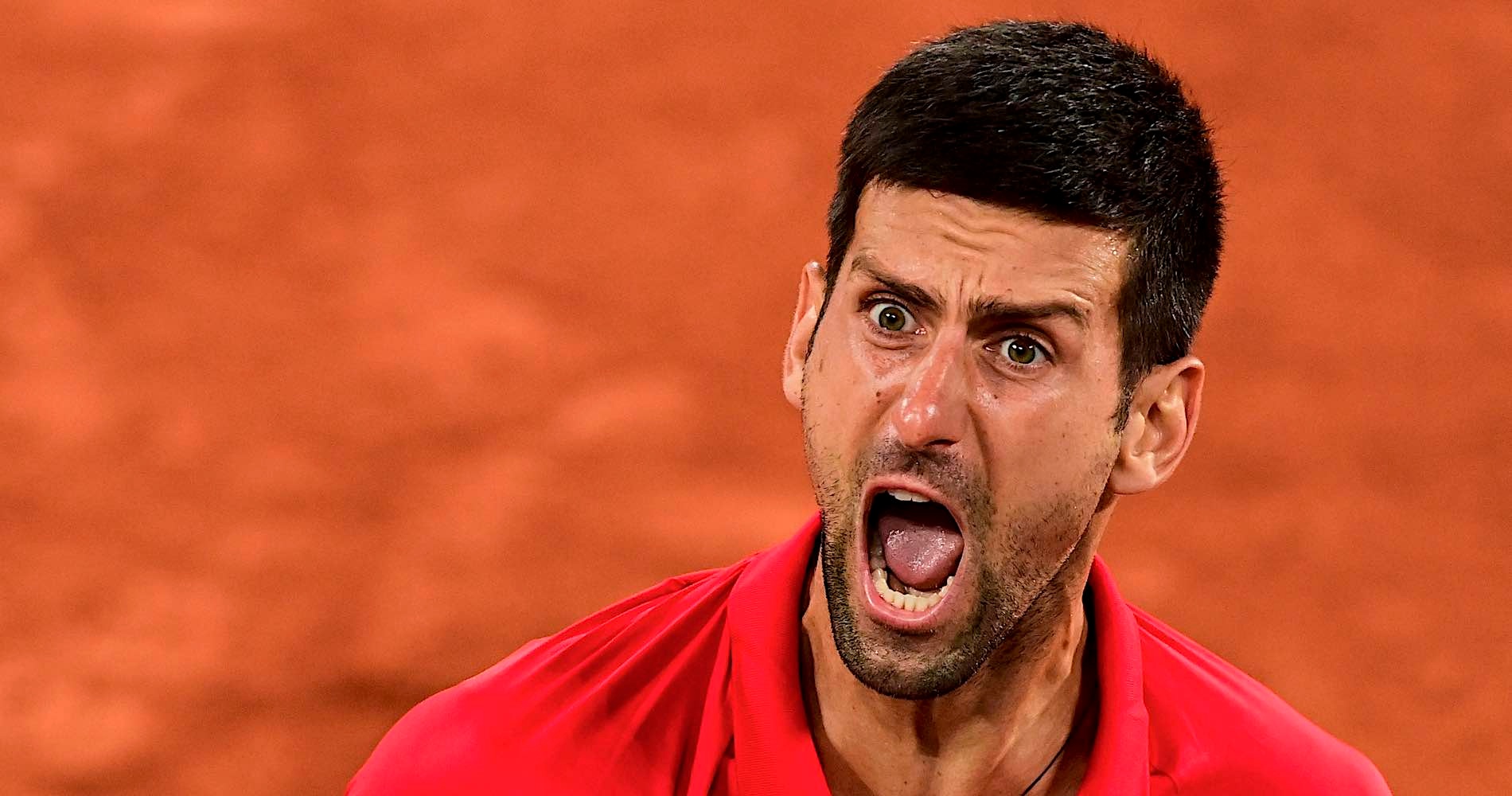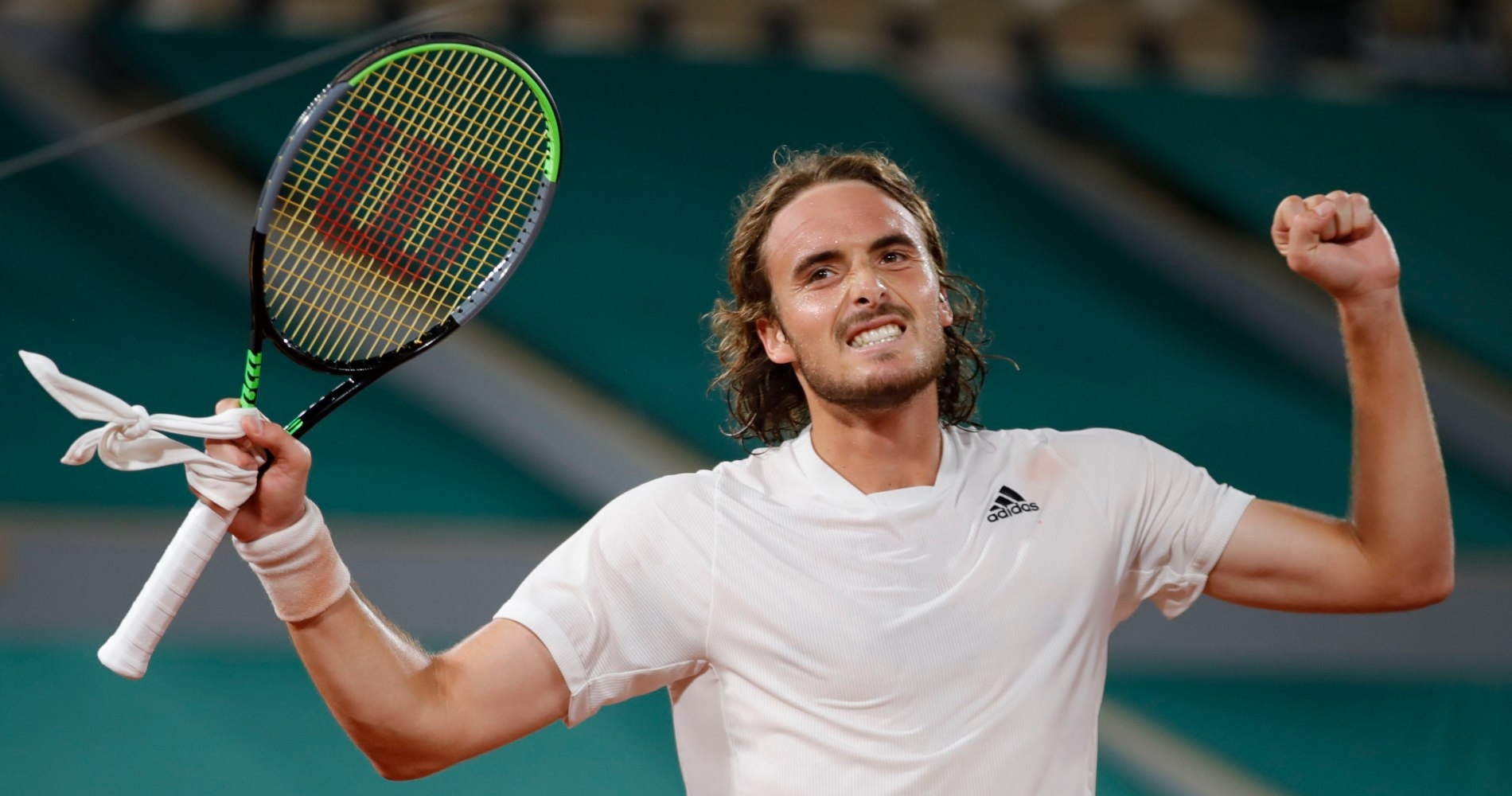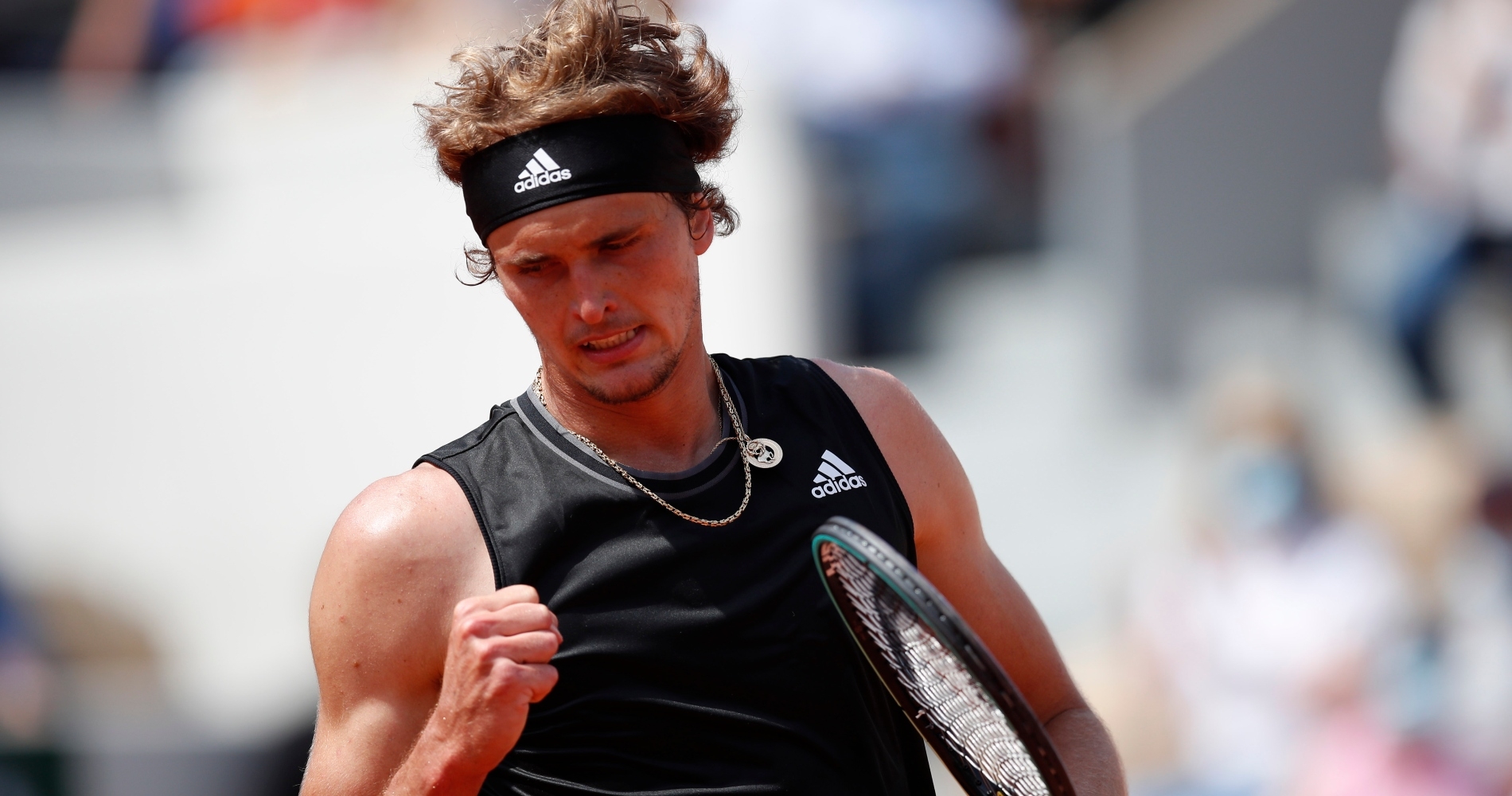Djokovic in the semis, Tsitsipas or Zverev in the final: A big mountain to climb even for Nadal
Novak Djokovic, Stefanos Tsitsipas, and Alexander Zverev stand in Rafael Nadal’s way of a 14th Roland-Garros title.The first is the last player to have beaten him at this event; the second is the last to have beaten him in a Grand Slam; the third is the last to have beaten him on clay.
 Rafael Nadal (Esp)
Rafael Nadal (Esp)
Rafael Nadal is bidding for for his 14th title at Roland-Garros. Although two potentially difficult matches remain in front of him, there is little reason to doubt Nadal’s chances. Ten days into this fortnight, the King of Clay has produced the kind of tennis that invokes memories of when the 34-year-old was in his absolute prime. In fact, he has lost only one set — to Diego Schwartzman in the quarter-finals. That eded Nadal’s French Open sets winning streak at 36, but for the most part his utter dominance continued.
As always, though, the 20-time Grand Slam champion has insisted during his press conferences that nothing is certain. He is staying humble, in typical Nadal fashion. It’s the only way, he believes, to eventually win what would be the 21st major title of his illustrious career. And, of course, it would pass Roger Federer to put Nadal out front by himself in the all-time men’s singles Grand Slam title count.
But the Spaniard knows not to look that far ahead. Everyone in the tennis world should realize that the road ahead could be problematic — even for Nadal. If the world No 3 is to triumph on Sunday, he would perhaps do so by overcoming two of the most difficult obstacles of his Grand Slam career. With all due respect to Federer (who in 2006, 2007 and 2008 was at the time the only player in the world superior to Nadal in the results department), Nadal’s remaining draw at Roland-Garros in 2021 looks like the ultimate test.
First up is one his biggest rivals, the opponent whom he has faced more times than anyone else in his career and the only active player who has defeated him on the terre battue of Paris. Novak Djokovic is the world No 1 and the winner of this year’s first Grand Slam at Melbourne Park. Djokovic is confident going into Friday’s semi-final showdown against Nadal, and you can’t blame him for it.
If the No 3 seed prevails on Friday, up next would be Stefanos Tsistipas or Alexander Zverev. Either man would be a big underdog against Nadal in the final, just as Dominic Thiem was in 2018 and 2019. However, both Tsitsipas and Zverev have left their own marks against Nadal in recent months. Tsitsipas in particular — given his Barcelona performance against Nadal in addition to his overall body of work in 2021 — perhaps looms even larger than Zverev as a threat for La Coupe des Mousquetaires.

DJOKOVIC HAS ALREADY DONE IT ON PHILIPPE-CHATRIER
- Why it’s a challenge for Nadal at Roland-Garros: Djokovic has beaten Nadal seven times on clay and is the only active player to have accomplished the feat at Roland-Garros. Djokovic’s win came in the 2015 quarter-finals (7-5, 6-3, 6-1).
- Their head-to-head: Djokovic leads 29-28 (19-7 for Nadal on clay)
- His Roland-Garros 2021: Djokovic is through to the last four after conceding three sets — two against Lorenzo Musetti, who led two sets to love in the fourth round, and one against Matteo Berrettini in the quarter-finals. Some Italians in the crowd heckled him, but the Serb showed great mental strength to advance. He seems driven by his quest for a 19th major title and has been pulling out his best tennis when he needs it.
- Their last match on clay: May 16, 2021, Rome final – Nadal d. Djokovic 7-5, 1-6, 6-3.
Djokovic has not yet won a Masters 1000 title this season. He came close in Rome and seemed to have a good chance against Nadal, who had lost in Monte-Carlo (quarter-finals) and Madrid (quarter-finals). Although the top seed took the second set, he was helpless against the comeback of his biggest rival. Nadal’s highest level returned just in time to win in three. - How he would beat Nadal: Probably thanks to his backhand, first and foremost. Since the start of his career, Nadal’s two-handed backhand has been unable to break down Djokovic’s two-hander. In addition to being solid with defensive backhands, Djokovic wields plenty of variety with it. He can play it with high topspin, accelerate down the line, play short cross-court, and hit drop-shots. His changes of direction and trajectory with this stroke can be detrimental to Nadal by preventing the 13-time Roland-Garros champion from imposing his power.
Djokovic will need to serve well. With a high first-serve percentage, the Serb would take control of rallies and would be inside the court to run his opponent around. He could dictate play and avoid giving Nadal short forehands in the mid court, which is where the Spaniard can become unplayable.
The warmer and sunny conditions at the beginning of June could suit Djokovic much more than those of last year’s final, where Nadal had outclassed him to win his 13th Roland-Garros title. It was more like summer weather in their 2013 semi-final, which was a far more competitive contest. However, it is likely that Friday’s meeting will end at night. - What to see?: Djokovic vs. Nadal this Friday not before 5.30 pm on Court Philippe-Chatrier.

STEFANOS TSITSIPAS HAS CHANGED THE BALANCE OF POWER IN 2021
- Why it’s a challenge for Nadal at Roland-Garros: Tsitsipas is No. 1 in the race to Turin and is the last player to beat Nadal at a Grand Slam. A memorable quarter-final at the Australian Open saw the Greek come back from two sets down to prevail 3-6, 2-6, 7-6, 6- 4, 7-5. Tsitsipas has also defeated Nadal on clay — at the 2019 Madrid Masters — and he came close to doing it again this year in Barcelona.
- Their head-to-head: Nadal leads 7-2 (3-1 for Nadal on clay)
- His Roland-Garros 2021: In line with his overall season on clay, Tsitsipas has been very solid. Tsitsipas avoided early traps set by Jeremy Chardy and Pedro Martinez before conceding one set to John Isner in the third round. Tsitsipas then rolled over Pablo Carreno Busta and his convincing victory against Daniil Medvedev proves that he is in full confidence.
- Their last match on clay: April 25, 2021, Barcelona final – Nadal d. Tsitsipas 6-4, 6-7, 7-5
Tsitsipas was very close to taking down Nadal in the final in Barcelona and depriving him of a 12th title at that tournament. Although Tsitsipas’ variety of shots was impressive, he cracked despite having a championship point. - How he would beat Nadal: By playing ultra-aggressive tennis, staying inside the court as much as possible. At the Australian Open, Tsitsipas beat Nadal in this way: he dominated from the back of the court, rarely going more than a meter behind his baseline. Nadal committed a fair few unforced errors on sometimes neutral balls. Tsitsipas went to the net less than his opponent, but he didn’t have to. In Barcelona, Tsitsipas often ran around his backhand to hit forehands and then followed them into the net to finish off points. So far at Roland-Garros he has won 77% of his net points, with more than 25 net approaches per match on average. We can expect Tsitsipas to be as aggressive as he was against Medvedev in the quarter-finals, and perhaps even more.
- What to see?: Stefanos Tsitsipas vs. Alexander Zverev this Friday at 2:50 pm on Court Philippe-Chatrier. The winner will reach the final, which is Sunday at 3:00 pm.

ALEXANDER ZVEREV, THE MOST RECENT PLAYER TO BEAT NADAL ON CLAY
- Why it’s a challenge for Nadal at Roland-Garros: Zverev is the most recent player to beat Nadal on clay. His win came in the Madrid quarter-finals four weeks ago.
- Their head-to-head: Nadal leads 6-3 (4-1 for Nadal on clay).
- His Roland-Garros 2021: Following a very sluggish start to the tournament in which he trailed fellow German Oscar Otte two sets to love, Zverev recovered perfectly and has won 15 consecutive sets. He had never qualified so easily for the semi-finals of a Grand Slam. If he defeats Tsitsipas on Friday, Sunday would mark his first-ever appearance in a major final.
- Their last match on clay: May 14, 2021, Rome quarter-final – Nadal d. Zverev 6-3, 6-4
A week after triumphing in Madrid, Zverev had much less to offer in Rome. He committed 26 unforced errors and went 1-for-10 on break points. Whereas faster conditions in the high altitude of Madrid helped Zverev, Nadal was aided by more normal clay-court conditions in Rome and as a result avenged his previous loss to the world No 6. - How he would beat Nadal: During his Madrid upset of Nadal, Zverev was formidable behind his serve (82% of first-serve points won, only two break points faced). He was also aggressive while being precise at the same time, with 28 winners — including 18 off the forehand. Often too passive, especially for a top player, the German took advantage of the high-altitude conditions that suited him perfectly. He was able to dictate play from start to finish. He also managed, while defending several meters behind his baseline, to change the course of rallies by finishing inside the court. At Roland-Garros, where the clay is similar to that of Rome, Zverev cannot afford to be passive in the rallies — otherwise he risks being manhandled by the Spaniard.
- What to see?: Stefanos Tsitsipas vs. Alexander Zverev this Friday at 2:50 pm on Court Philippe-Chatrier. The winner will reach the final, which is Sunday at 3:00 pm









